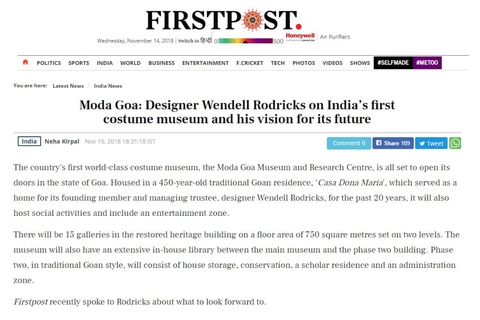The country’s first world-class costume museum,the Moda Goa Museum and Research Centre, is all set to open its doors in the state of Goa. Housed in a 450-year-old traditional Goan residence. ‘Casa Dona Maria’, which served as a home for its founding member and managing trustee, designer Wendell Rodricks, for the past 20 years, it will also host social activities and include an entertainment zone.
 There will be 15 galleries in the restored heritage building on a floor area of 750 square metres set on two levels. The museum will also have an extensive in-house library between the main museum and the phase two building. Phase two, in traditional Goan style, will consist of house storage, conversation, a scholar residence and an administration zone.
There will be 15 galleries in the restored heritage building on a floor area of 750 square metres set on two levels. The museum will also have an extensive in-house library between the main museum and the phase two building. Phase two, in traditional Goan style, will consist of house storage, conversation, a scholar residence and an administration zone.
Firstpost recently spoke to Rodricks about what to look forward to:
By Neha Kirpal
From First Post, 10 November 2018

